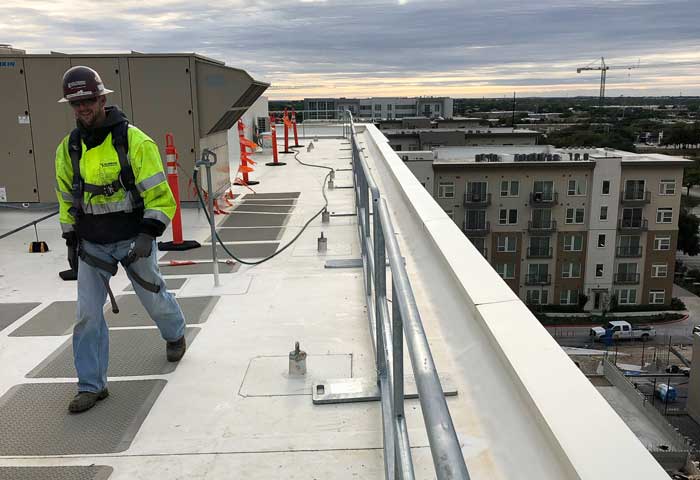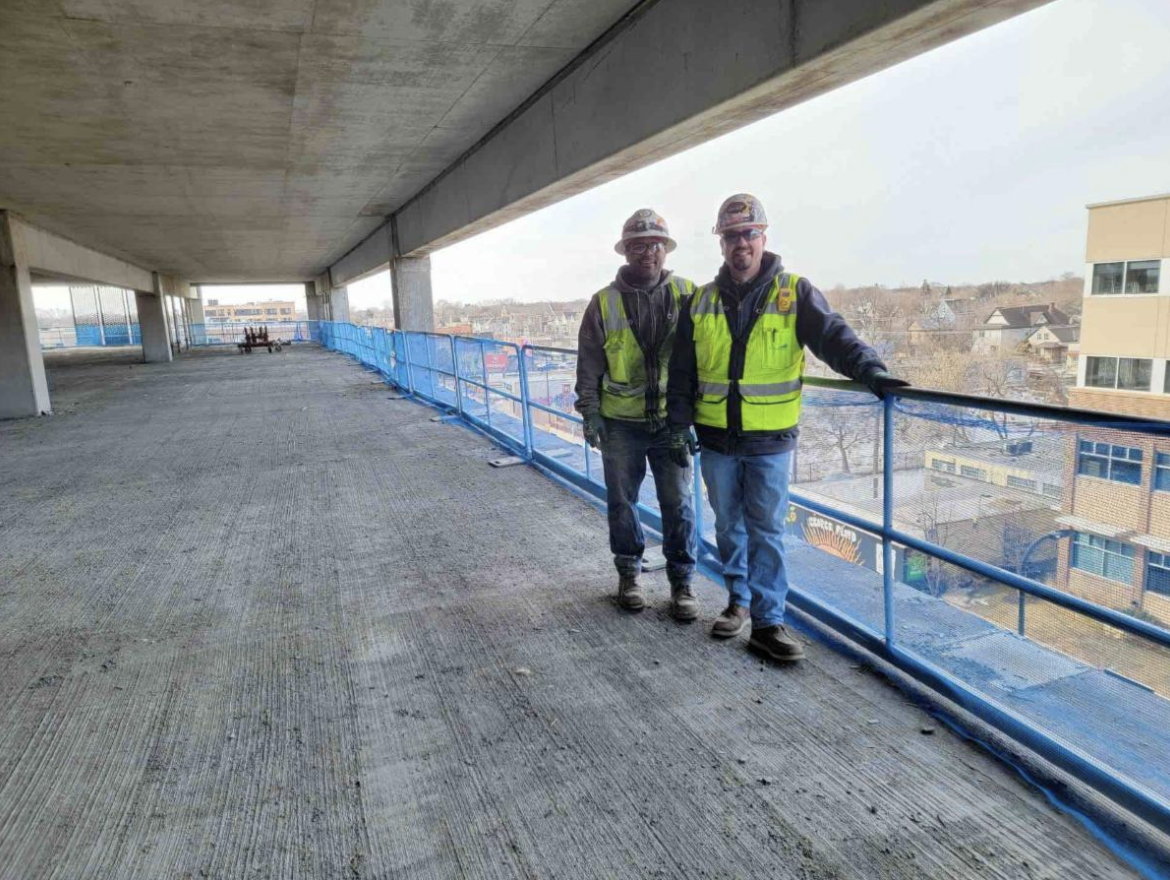Are you handing your workers a bucket of bull$#!^?

When I started in construction setting precast concrete, I was given a safety belt and a 6′ lanyard to safeguard me when working from heights. I would walk, most often unprotected from falls, to the nearest pick loop to tie-off. Once tied off, I would anchor in and like a dog on a leash I would do my work. In construction you have to be mobile and a 6’ working radius is frustrating, impractical and inefficient.
Today in some cases, we still have leaders who fail to integrate safety into the actual work process thus exposing workers to falls and/or last-minute risky decisions that could cause a fall or injury.
The old mentality of “safety in a bucket” still applies – “here’s a bucket, everything inside this 5-gallon bucket is all you need to stay safe.” This mentality is not your end all, save all. “I’m carrying my bucket and I’m protected” is like saying “I only need a hammer and nail to complete a carpentry job.”
Budgets also play a role. And, I get it – it’s not always feasible to work out of a basket or install scaffolding. But, a one-size-fits-all fall protection solution is not enough. There’s so much more to safety than what can fit in a bucket.
First and foremost, you need to plan the work and work the plan. Risk increases when insufficient planning time is not applied on the front-end of the work. It’s about selecting and collecting the right type and amount of protections for the job with consideration to location, environment, and probable hazards that will allow workers to complete the job without injury.
On the contrary, a poor planning process, improper equipment selection, insufficient funding, and inadequate training are often at the center of any preventable injury.
So, where are you at? Are you handing your workers a bucket of bull$#!^ or a toolbox built on pre-planning and safety mindfulness? Here’s a few tips to ensure you’re safe on the “latter”:
Standardize the Work Process
Developing work procedures help to apply safety consistently. Procedures prescribe a work sequence, necessary tools, equipment and resources that may be needed. Run thru the job tasks and processes prior to starting the job to ensure you haven’t missed something.
- What are the specific actions/steps for the job?
- What tools and accessories are required?
- What resources do you need? People, equipment
Assess Work Hazards and Risk
You need to look at tasks vs hazards and possible exposures. Are your employees covered in all these scenarios?
- What are the possible hazards and risks?
- Can the hazards or risks be eliminated?
- What are the corrective actions that need to be taken to protect the worker from possible hazards and risks?
- If you cannot eliminate a risk or exposure, what is your plan to work safely around / with it?
Understand the OSHA Hierarchy of Controls
For example, where fall protection exposures exist employers should first consider the use of guardrails, safety nets and lastly personal fall arrest equipment. While safety nets aren’t commonly used these days, you may also consider using aerial lifts, installing scaffolding or safe work platforms, then ladders, then finally personal arrest systems.

Create Standard Operating Procedures
Get field people that conduct the work to integrate safety into their process. Safety needs to be a part of the work plan.
- Define your operating procedures by job task.
- Create a plan to communicate these procedures and checkpoints to ensure field workers are integrating the safety plan.
Ask for Expertise
In the case of fall protection equipment thousands of options exist and, in many cases, there is a solution for every problem. There are no longer instances where an employer can claim “infeasible” when it comes to not applying some type of fall protection solution.
- Reach out to your equipment supplier or contact a safety consultant to work through your needs.

About Deb Hilmerson
Changing a mindset takes a mountain of grit, something that describes Deb Hilmerson perfectly—from her hard hat to her steel toe boots. Her 30 years in construction as a field laborer, Safety Director and Consultant at companies like 3M Worldwide and M.A. Mortenson landed her in the right place at the right time to transform archaic equipment practices on construction sites as President/CEO of Hilmerson Safety. More About Deb
About Hilmerson Safety
Hilmerson Safety® is a full-service safety product design and manufacturing company serving the construction industry. Since 2001 Hilmerson Safety® has been working with construction industry leaders and contractors to develop safe, lean, construction-grade™ products and solutions that add to the company’s bottom line.
For more information email us or call (952) 239-0125




